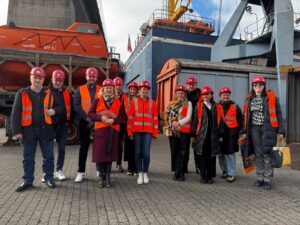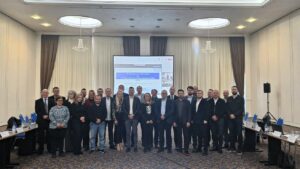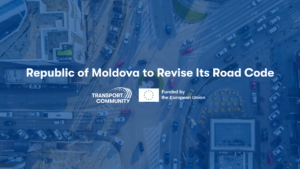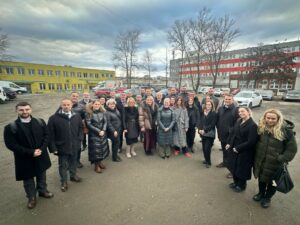TRIESTE – The Central European Initiative (CEI) in cooperation with the Permanent Secretariat of the Transport Community gathered stakeholders on Friday, 8 November, in Trieste to discuss advancing regional integration through enhanced passenger rail services along the route Trieste–Ljubljana–Zagreb–Belgrade and across the Western Balkans.
The event presented the results of a study, conducted by experts from University of Politecnico Milano, outlining opportunities and challenges for strengthening rail connectivity between Central and Southeast Europe. The event, held at CEI’s Executive Secretariat, brought together senior representatives from Italy, Slovenia, and Croatia, along the senior representatives of the rail operators from the Western Balkans.
In their opening remarks, the speakers underlined the essential role of improved rail services in advancing the EU’s Sustainable and Smart Mobility Strategy, particularly in the Western Balkans, while others outlined possible solutions and opportunities.
“We need to reconnect our cities by train – what was possible for 200 years should be achievable today. Modernising infrastructure is already underway, new trains are being purchased, and services are being enhanced through digital solutions. But to truly transform rail travel, we must focus on reforms that improve safety, ensure interoperability, and streamline border crossings. While we work toward these long-term goals, we could start with a pilot project – introducing a train services connecting Austria, Italy, Slovenia, Croatia and South – Eastern European Region – bringing seamless, efficient rail travel across the region within reach,” Director of the Permanent Secretariat of the Transport Community, Mr Matej Zakonjšek, pointed out.
Following the opening remarks, the study on opportunities and challenges for the rehabilitation of rail passenger services along the Trieste – Belgrade route was presented. The study concludes that there is a good market demand on the route that connects 6.6 million people generating 93.8 billion GDP. Also, that the strategic investments, modernised maintenance practices, and targeted infrastructure upgrades are essential to improve passenger rail services and reduce travel times in the region.
The study’s key recommendations include improved coordination between stakeholders, renewing rolling stock, and simplifying border crossings at EU and non-EU borders to enhance efficiency. Aligning with EU standards, particularly the 4th Railway Package, is crucial to harmonise policies across the region. Additionally, each major rail route should have a tailored strategy to optimise frequency, multimodal integration, and stopping patterns based on user needs. High-demand routes such as Munich–Vienna–Ljubljana–Zagreb–Belgrade, Budapest–Belgrade and Trieste–Ljubljana–Zagreb–Belgrade show strong potential, while others require strategies to improve financial viability. Upgrading passenger experience through onboard amenities, real-time information, and accessibility improvements, coupled with an effective marketing strategy, can attract more users and make rail a competitive alternative to other modes of transport.
Building upon the findings of the study, a round table featuring key representatives from the railway industry from the South East European Region and neighboring EU Member states discussed strengthening passenger rail connections in the Adriatic Ionian region.













